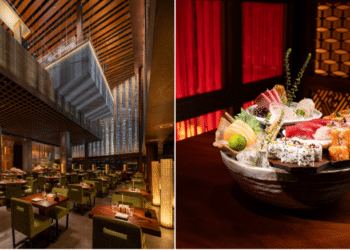
Khaled AlShami, director, solution consulting, Middle East & Africa at Infor, shares his thoughts on technologies which will drive point-of-sale integrations for restaurants and the foodservice industry in the year ahead.
For the restaurant and foodservice spaces, economic disruption is the common denominator across all kinds of businesses within the industry. The economic downturn has tested the limits of organisations across the spectrum.
Luckily, our era is also characterised by encouraging displays of agility and innovative thinking in answer to that disruption, moving past the status quo, rethinking processes, and continuing to serve guests in ways that keep them at their safest, most comfortable, and within their preferences which have been in place for a while.
That’s just it. The best in the industry have focused all along on how to make their platforms more supportive of where guest expectations and emerging technology are leading.
In part, this is all about the basics, tying restaurant point-of-sales to expand solutions and functionality that allow brands to meet guests where they are, creating seamless experiences for them and their staff, and adding momentum to go beyond today’s demands to scale for where things are headed in the future. This is what resiliency looks like in 2020. To serve that vision, what are some integral, essential integrations that characterise an advanced POS solution? Here are five.
Mobile Ordering Technology
Mobile ordering technology is driving guests back to brands they trust. Revenue in the online food delivery segment is projected to reach US$136,431m globally in 2020, and show an annual growth rate of 7.5% resulting in a projected market volume of US$182,327m by 2024, according to data from Statista.
The potential for a POS integration with mobile ordering that allows consumers to engage with the ordering process comfortably and safely is an important takeaway for our current era. It points to the future, too.
Digital Payment Platforms
With mobile-friendly ordering processes emerging as a primary channel to restaurant services, it makes sense that support of payment methods like ApplePay, GooglePay, Alipay, and other mobile-based payment platforms are also emerging as essential POS integrations.
Right now, contactless payments of many kinds are rising in significance in an era defined by social distancing and concerns around handling cash, or even cards.
Additionally, in-app options that integrate with online payment providers like Visa Checkout and others for food delivery also continue to emerge. As consumers rely more and more on these options, investing in integrations with mobile payments, an evident trend today, is likely to also pave the way to the future.
Self-Serve Kiosks
Coupled with today’s higher standards for cleaning high-touch surfaces, kiosk technology is still very much a part of the conversation when it comes to where the guest ordering experience is going.
Maintaining distance and minimising contact has been a consumer preference in restaurants and food services for some time. A recent poll from Tilster reported that roughly a third of restaurant-goers prefer self-service kiosks when in store versus dealing with human cashiers.
While kiosks are most often not very integrated with restaurant point-of-sale solutions as they are extensions of them, kiosk technology represents an important shift in the way that consumers engage with brands, and how serving guest preferences positively affects order volumes and values.
Meal Plans and Loyalty Programmes
Creating seamless experiences is what it’s all about, no matter how a guest places an order, or which means of payment they use. With meal plans in college and university settings or workplace contexts, foodservice point-of-sale solutions should always be in synch and create greater visibility for the guest as to the status of their balances and other important factors. Meal plans also play a vital role in the rise in importance of contactless and cashless transactions.
With loyalty programmes designed to nurture long-term relationships with guests, the same principle should be true. In this, the POS solution in question must integrate via API with these third-party applications across the board, consistent with all locations, and always in line with the newest versions of the software updated in frequent
cadence.
Robust Menu Management
To unify an offering across multiple locations and channels, restaurants and food services leaders are also emphasising global control over menu items and details. In this way, even if items go under different names depending on the brand or concept, they can still be tracked to set optimal pricing, be judged by their performance, and be promoted on menu displays and kiosk upsell screens accordingly.
Importantly, centralised menu management that helps organisations do all of this can be rolled out simultaneously, making sure that an offering is always consistent.
Cloud technology plays an integral part in all of the above. It links locations together, makes reporting easily accessible, and allows a faster turnaround from analysis to action across an entire brand. With the rate of change in the industry, that kind of agility is essential.
What is the future of integrated restaurant POS?
In an era of industry disruption, restaurants and foodservice had to be flexible, operationally manoeuvrable, and open to where culture and technology is taking the industry. The question remains: how will organisations stay resilient during these times?



































































